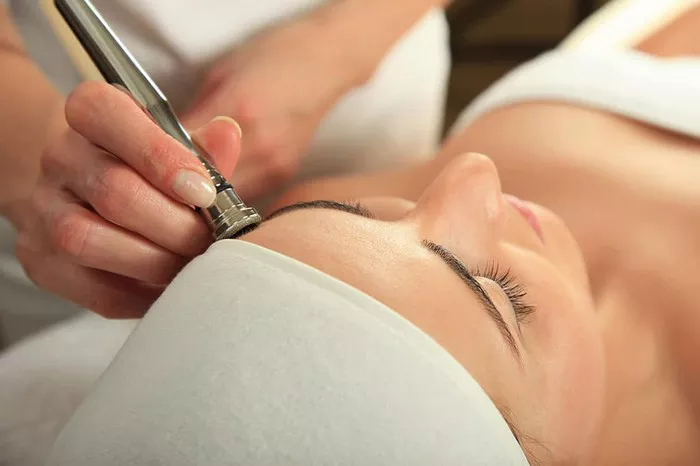Microdermabrasion is a cosmetic procedure that has become increasingly popular in recent years. It is a non-invasive method of exfoliating the skin to improve its appearance, texture, and tone. In this article, we will discuss what microdermabrasion is, how it works, and the benefits it can offer.
What is Microdermabrasion?
Microdermabrasion is a cosmetic procedure that involves using a device to remove the outermost layer of dead skin cells from the surface of the skin. This layer is made up of the stratum corneum, which is composed of dead skin cells, oil, and other debris.
The procedure can be performed by a licensed aesthetician or a dermatologist using a specialized device that sprays fine crystals or uses a diamond-tipped wand to gently remove the outermost layer of skin.
How Does Microdermabrasion Work?
Microdermabrasion works by gently removing the outermost layer of dead skin cells from the surface of the skin. The device used in the procedure uses either crystals or a diamond-tipped wand to remove the dead skin cells.
The crystals are usually made of aluminum oxide or sodium bicarbonate, and they are sprayed onto the skin and then vacuumed away along with the dead skin cells. The diamond-tipped wand, on the other hand, uses a small, diamond-covered tip to gently remove the dead skin cells.
During the procedure, the device is passed over the skin in a back-and-forth motion, effectively exfoliating the skin and promoting the growth of new skin cells.
Benefits of Microdermabrasion
-
Improves Skin Texture
Microdermabrasion can improve the texture of the skin by removing the outermost layer of dead skin cells. This can result in smoother, softer, and more youthful-looking skin.
-
Reduces Fine Lines and Wrinkles
By removing the outermost layer of dead skin cells, microdermabrasion can reduce the appearance of fine lines and wrinkles. The procedure can also stimulate collagen production, which can help to plump up the skin and reduce the appearance of wrinkles.
-
Diminishes Hyperpigmentation
Hyperpigmentation is a common skin condition that causes patches of skin to become darker than the surrounding skin. Microdermabrasion can help to reduce the appearance of hyperpigmentation by removing the outermost layer of skin and promoting the growth of new, healthy skin cells.
-
Minimizes Acne Scars
Microdermabrasion can help to minimize the appearance of acne scars by removing the outermost layer of skin and promoting the growth of new skin cells. The procedure can also help to unclog pores and reduce the production of oil, which can help to prevent future breakouts.
-
Enhances Skincare Product Absorption
Microdermabrasion can enhance the absorption of skincare products by removing the outermost layer of dead skin cells. This allows the active ingredients in skincare products to penetrate deeper into the skin and provide more effective results.
Potential Side Effects of Microdermabrasion
Microdermabrasion is a safe and effective procedure, but like any cosmetic procedure, it does carry some potential side effects. These side effects may include:
-
Redness and Swelling
Redness and swelling are common after a microdermabrasion treatment, but they typically subside within a few hours to a few days.
-
Sensitivity
The skin may be sensitive after a microdermabrasion treatment, and it is important to avoid exposing the skin to direct sunlight or extreme temperatures.
-
Bruising
Bruising is rare after a microdermabrasion treatment, but it can occur in some cases. If you experience bruising, it should resolve within a few days.
-
Infection
While the risk of infection is low with microdermabrasion, it is still possible. It is important to follow the aftercare instructions provided by your aesthetician or dermatologist to reduce the risk of infection.
-
Skin Discoloration
In some cases, microdermabrasion can cause temporary skin discoloration. This typically resolves within a few days to a few weeks.
Conclusion
Microdermabrasion is a non-invasive cosmetic procedure that can improve the texture, tone, and appearance of the skin. It works by removing the outermost layer of dead skin cells, which can help to reduce the appearance of fine lines, wrinkles, hyperpigmentation, and acne scars. While microdermabrasion is generally safe and effective, it is important to follow the aftercare instructions provided by your aesthetician or dermatologist to reduce the risk of side effects. If you are considering microdermabrasion, speak with a licensed professional to determine if it is the right choice for you.

